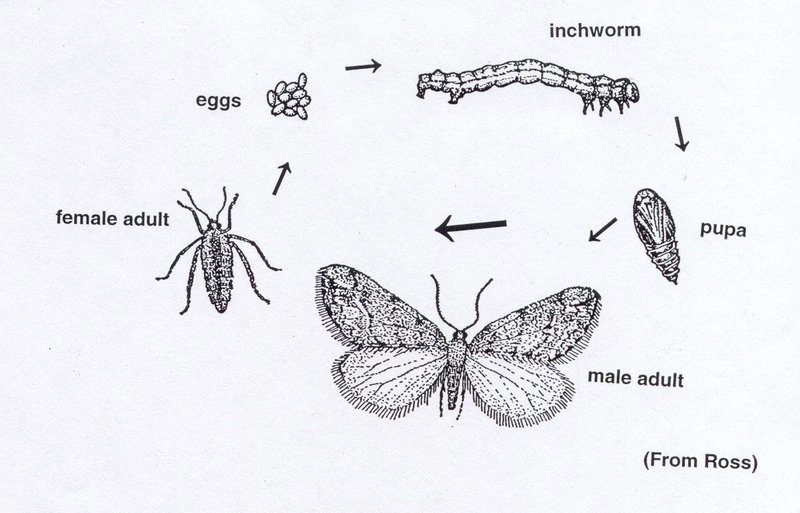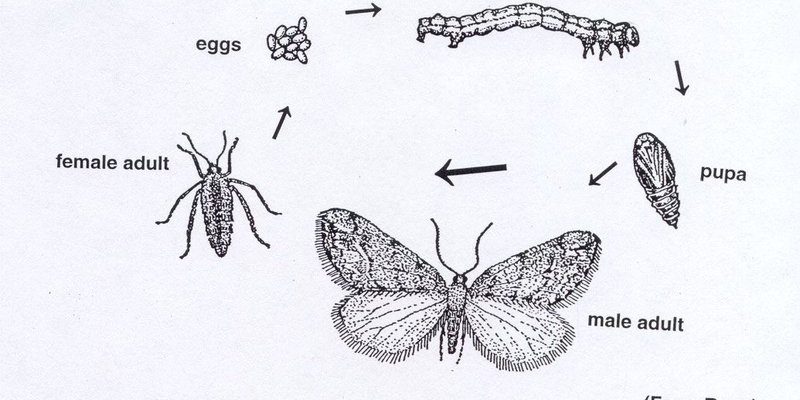
When we talk about the lifecycle of inchworms, it’s like flipping through the pages of a book. Each stage from egg to adulthood reveals something unique about their biology and behavior. You might be wondering, “Why should I care about inchworms?” Well, they play a vital role in the ecosystem as both herbivores and prey for other animals. Plus, their transformation can inspire a bit of wonder, just like watching a movie where the hero evolves into something greater.
Let’s dive into the fascinating lifecycle timelines of common inchworm species and see how these tiny creatures grow and change.
What Are Inchworms?
First off, let’s get to know what inchworms really are. As I mentioned, they’re the larvae of geometrid moths. You might be surprised to learn that they don’t actually “inch” along; rather, they move in a unique way that makes them look like they’re measuring their path. This movement is called “looping.” When they change their body shape, they can mimic twigs or leaves, which helps them avoid predators—pretty clever, right?
Inchworms can be found in various habitats, including forests, gardens, and even urban areas. They tend to feed on leaves, making them a common sight during the warmer months. While they might seem like just another garden pest, their role in the ecosystem is crucial. As they munch on foliage, they can influence plant growth and serve as a food source for birds and other animals. So next time you spot one, you’ll know there’s more than meets the eye!
Egg Stage: The Beginning of Life
Inchworms start their journey as tiny eggs laid on leaves or branches. Depending on the species, a female inchworm can lay anywhere from a few dozen to several hundred eggs at a time. Isn’t that wild? The eggs are often spherical or oval-shaped, and they’re usually camouflaged to blend in with their surroundings, reducing the chance of being eaten.
Once the eggs hatch, which usually takes about one to two weeks, the baby inchworms emerge. They’re tiny and vulnerable, needing to find food quickly to grow strong. This stage is crucial because the survival of these hatchlings depends on finding the right kind of leaves to munch on.
Larval Stage: Growing Up
After hatching, the inchworms enter the larval stage, which is the “teenage” part of their life. This period can last anywhere from a few weeks to several months, depending on the species and environmental conditions. During this time, they’ll go through multiple molts, shedding their skin as they grow. Each time they molt, they get a little bigger, like kids outgrowing their clothes!
You might be wondering what they eat. Inchworms have a taste for a variety of leaves, but they tend to prefer plants like oak, birch, and fruit trees. As they munch away, they’re not just feeding themselves; they’re also preparing for their next big transformation. Their diet directly impacts how healthy they’ll be when the time comes to pupate.
Pupal Stage: The Calm Before the Storm
Once they’ve made the most of their leafy buffet, inchworms enter the pupal stage. This is where things get really interesting. They find a safe spot, often hidden under leaves or within tree bark, and form themselves into a pupa. This stage can last anywhere from a few weeks to several months, depending on the species and environmental conditions.
Inside the pupa, the inchworm undergoes some serious changes. It’s almost like a magical transformation, where the insect’s body breaks down and reassembles into a moth. This stage is vital as it prepares the inchworm for its next life as a fully developed adult moth. It’s a bit like a superhero training camp, preparing for the big reveal!
Adult Stage: The Final Transformation
After the waiting game, it’s time for the inchworm to emerge as a moth. Adult geometrid moths are generally quite beautiful, with delicate wings that often display stunning patterns. Depending on the species, the adult inchworm can live anywhere from a few weeks to a couple of months. Their primary goal during this time is to mate and lay eggs, which brings us back full circle to the beginning of our story!
During this stage, adult inchworms don’t eat much. Instead, they rely on their stored energy from the larval stage. Their focus shifts to finding a mate, and, once that’s done, the cycle starts all over again. You can imagine what a remarkable journey these creatures undergo, from a tiny egg to a beautiful moth that contributes to the ecosystem.
Why Understanding Inchworm Lifecycle Matters
You might be asking yourself, “Why does this all matter?” Understanding the lifecycle of inchworms isn’t just about learning facts; it’s about recognizing their role in the environment. Inchworms are part of a bigger picture that includes plants, predators, and the balance of the ecosystem. By studying these creatures, we gain insights into biodiversity and how various species interact with one another.
Knowing their lifecycle can also help gardeners and farmers manage their crops better. By understanding when inchworms are most likely to hatch or be at their most destructive, people can take steps to protect their plants, whether it’s through natural predators or safe insecticides.
In summary, the lifecycle of common inchworm species is a remarkable journey that takes them from tiny eggs to majestic moths. Each stage—from egg to larva, to pupa, and finally to adult—plays an essential role in their survival and our ecosystem. The next time you spot an inchworm, remember that this little creature is part of a fascinating story filled with transformations and challenges.
Understanding these tiny inhabitants can deepen our appreciation for nature and all its wonders. So the next time you take a stroll in the park or your backyard, keep an eye out for inchworms. They might just inspire you to look at the world a little differently.

